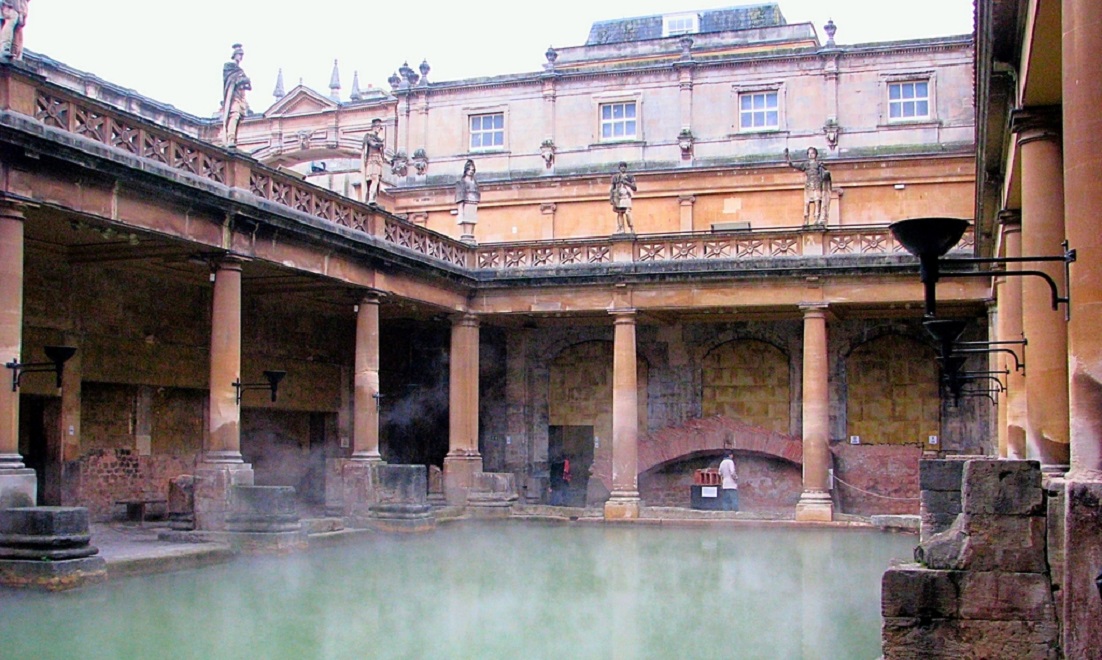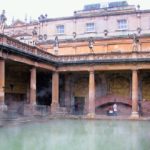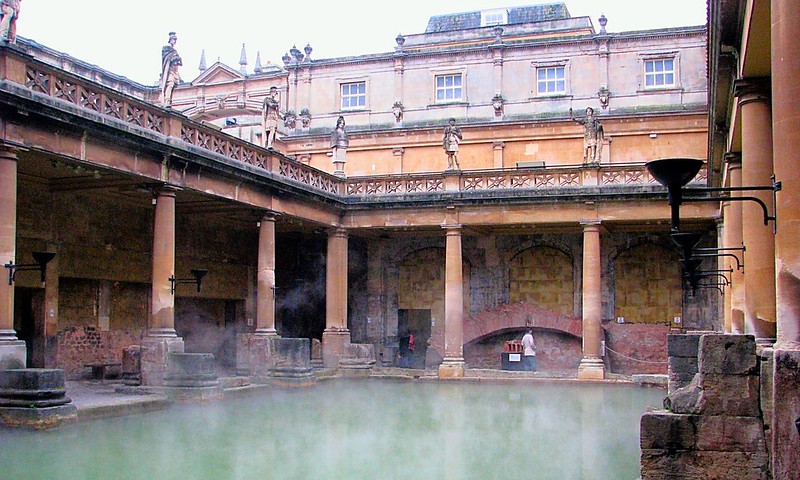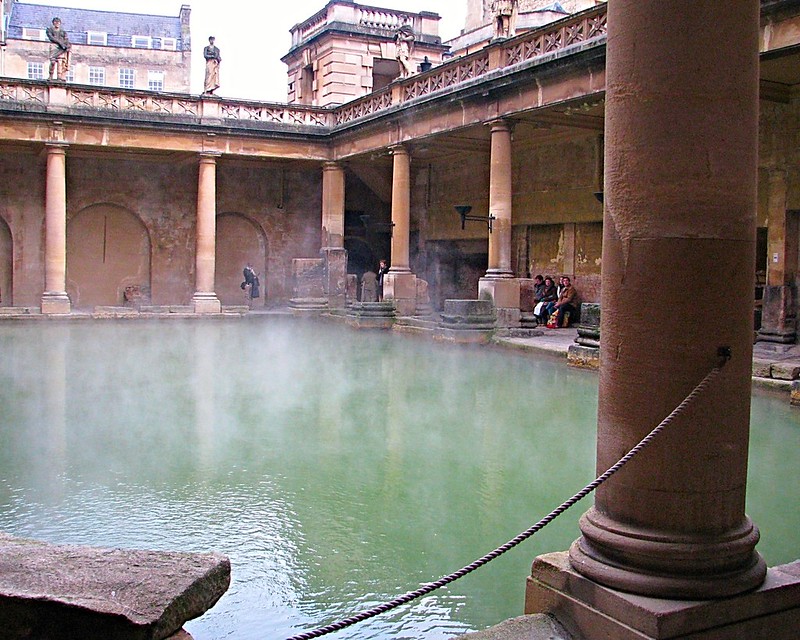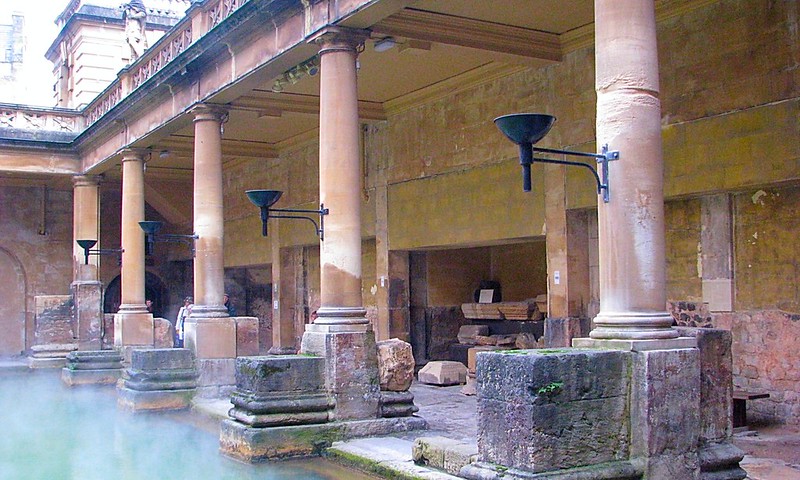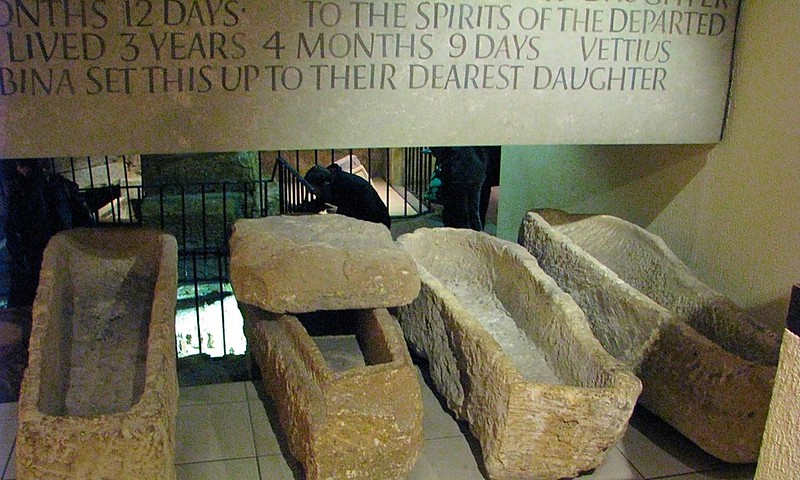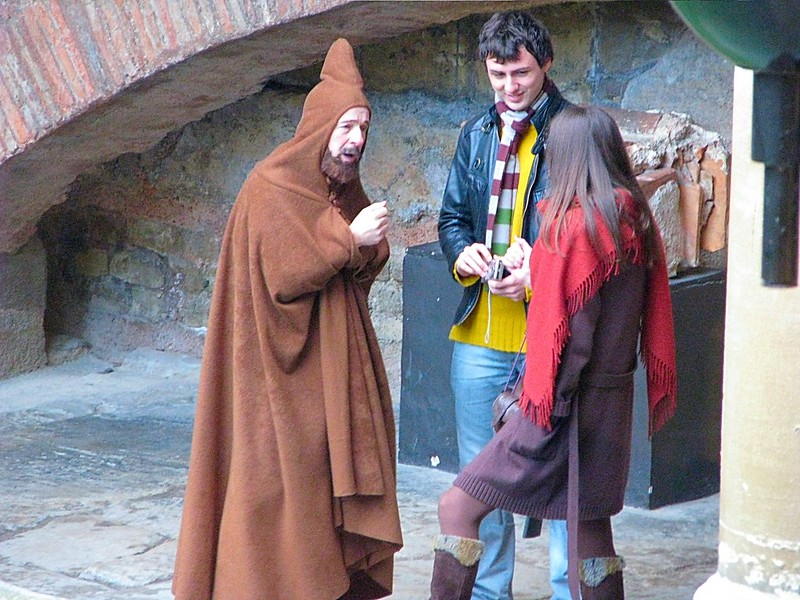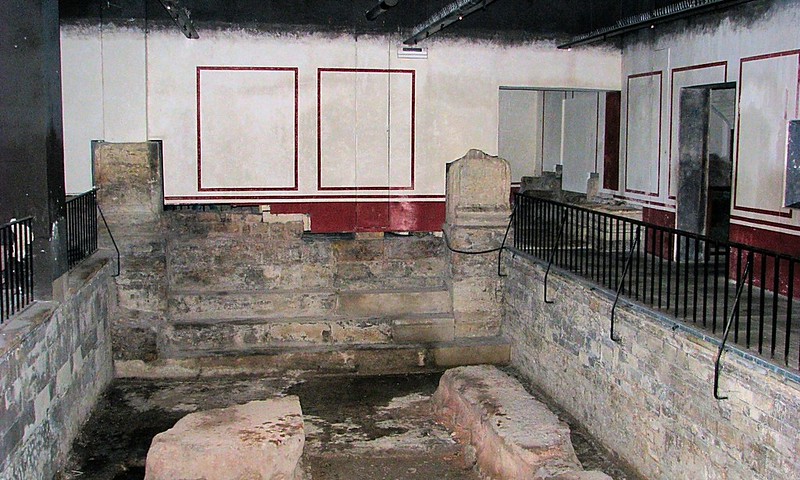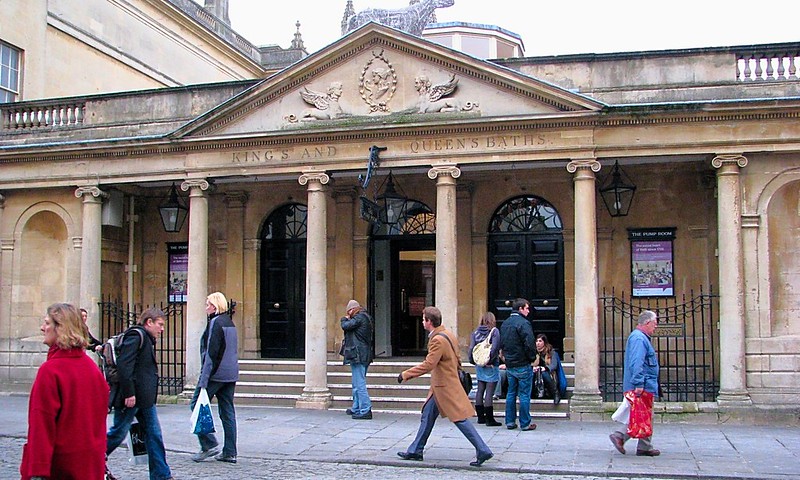Roman Baths
Ancient Roman Bath House
Ancient Roman Bath House complex is a site of historical interest in the English city of Bath. The house is a well-preserved Roman site for public bathing. The Roman Baths themselves are below the modern street level.
The name Sulis continued to be used after the Roman invasion, leading to the town’s Roman name of Aquae Sulis (“the waters of Sulis”). The temple was constructed in 60-70 AD and the bathing complex was gradually built up over the next 300 years. During the Roman occupation of Britain, and possibly on the instructions of Emperor Claudius, engineers drove oak piles to provide a stable foundation into the mud and surrounded the spring with an irregular stone chamber lined with lead. In the 2nd century it was enclosed within a wooden barrel-vaulted building, and included the caldarium (hot bath), tepidarium (warm bath), and frigidarium (cold bath). After the Roman withdrawal from Britain in the first decade of the 5th century, these fell into disrepair and were eventually lost due to silting up, and flooding. TheAnglo-Saxon Chronicle suggests the original Roman baths were destroyed in the 6th century.
Steam rising
The water that flows through the Roman Baths is considered unsafe for bathing, partly due to its having passed through the still-functioning original lead pipes, and up until World War II, it was advertised on the basis of the radioactivity it contained. However the more significant danger is now considered to be infectious diseases. In October 1978, a young girl swimming with the Bath Dolphins, a local swimming club, in the restored Roman Bath contracted meningitis and died, leading to the closure of the bath for several years. Tests showed that Naegleria fowleri, an amoeba, was in the water. The newly constructed Thermae Bath Spa nearby, designed by Nicholas Grimshaw and Partners, and the refurbished Cross Bath allow modern-day bathers to experience the waters via a series of more recently drilled boreholes.
Fascinating place to visit
Probably was exactly the same many centuries ago.
Ancient stone coffins
I would not have enjoyed being a pallbearer. 🙂
Acting the part as the English love to do.
Taking a bath was not a simple chore. There was not one bath to use in a large complex such as the one at Bath. A visitor could use a cold bath (the frigidarium), a warm bath (the tepidarium) and a hot bath (the caldarium). A visitor would spend some of his time in each one before leaving. A large complex would also contain an exercise area (the palaestra), a swimming pool and a gymnasium. One of the public baths at Pompeii contains two tepidariums and caldariums along with a plunge pool and a large exercise area.
Ancient Roman Bath House
Does not look too inviting does it?
That water looks very unhealthy
This is no place for a swim.
To receive my latest posts please follow me on Twitter Follow @David_Herd
Entrance to the Baths
The entrance does not indicate the treasure inside.
Thanks for visiting my Historic Roman Baths in Bath photo blog.
More posts for you to see
English restaurants City of Bath Lands End
Pattaya Hilton
This is the view from Horizons the amazing rooftop bar. A great five star hotel located opposte the beach & above the Central Festival shopping mall. Just book through THIS LINK for an excellent room rate.
Check out these great photo blogs.
Counter only started June 16 2020.
